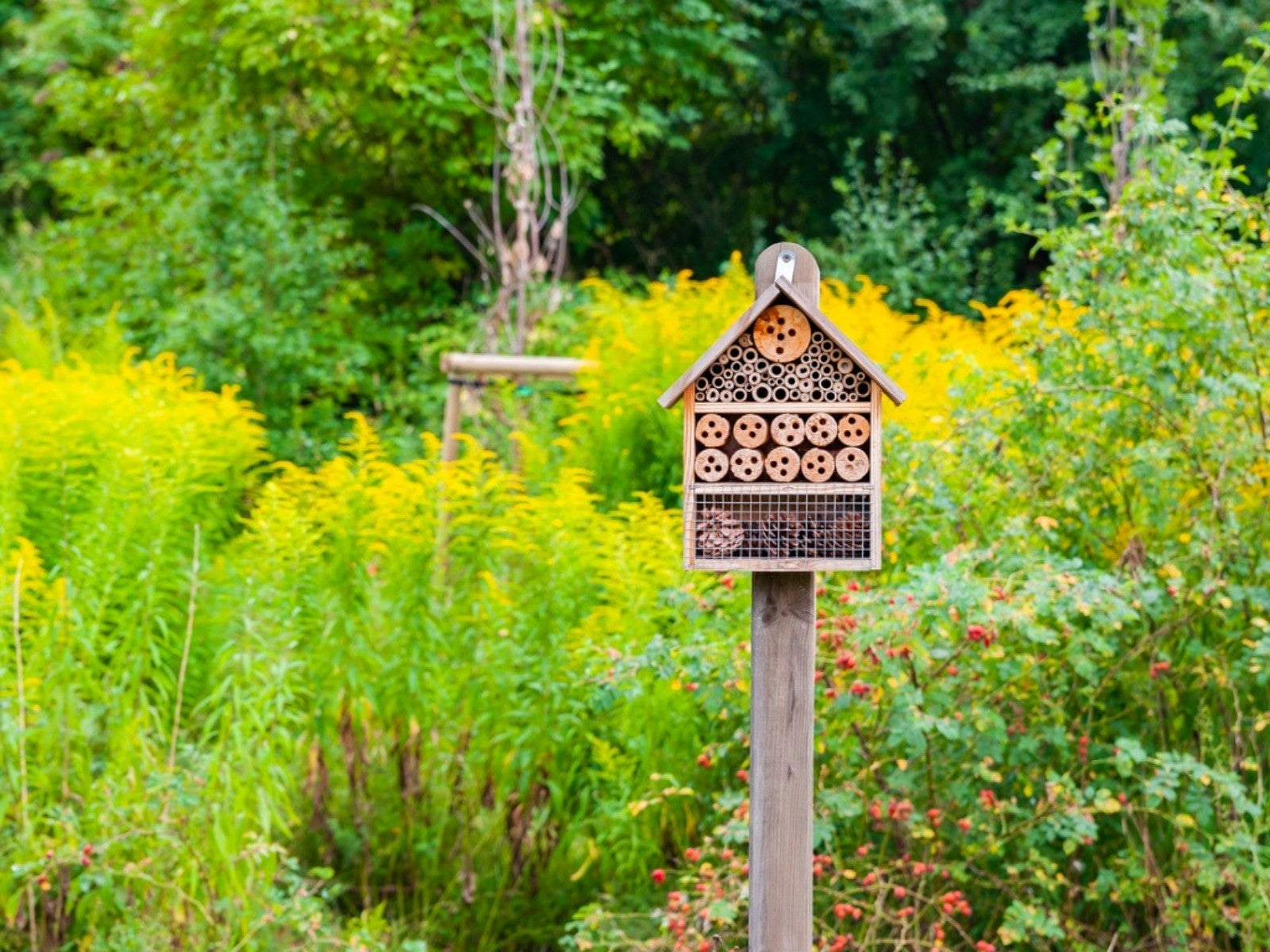Turn Your Backyard Into A Bee Sanctuary


Bees are the lynchpin to plant pollinating. While there are many other insects and animals that are part of the process, bees are the hardest workers. Creating a beneficial habitat for bees will encourage them to stay in the garden, promoting flowering and fruiting plants.
How to Attract Bees
Keeping a tidy garden may actually backfire for bees. This is because it removes items and sites that are usually used by the insects. Only honeybees form hives, while 70% of bees nest in the ground and 30% use cracks and crevices as their bee home.
There are over 20,000 bee species found in the world. This diversity encompasses some of the most important insects for agriculture, wild plants, and home gardens. Creating a bee sanctuary garden will provide habitat and food for our buzzing little friends. Such practices invite bees into the garden and increase plants’ ability to flower, fruit, and set seed. Following some tips on how to make a bee habitat will find your garden abuzz with these beneficial insects.
Tips on Creating a Bee Sanctuary
Even small space gardeners can encourage pollinators to stay. One of the most crucial steps in promoting beneficial bees is to avoid using pesticides, especially around blooming flowers. Or opt for a "bee safe" formula that will not harm the good insects. Sticky traps should also be avoided, as they do not discriminate and can trap bees.
Most bee species are solitary and do not live in a group like honeybees. These varieties may live in the soil, piles of debris, or in cavities in trees and stems. While keeping a manicured yard may be important to a home gardener, such activities reduce habitats for bees. If an untidy yard is not something you want, there are ways to increase habitat without having piles dotting the landscape. Leave a brightly lit area of the garden un-mulched so bees can access the soil. Also avoid weed barrier fabric which will prevent burrowing. And although you might not like it, allow some dandelions to flourish, as they are important bee food.
Other Details of the Bee Sanctuary
Bees, like us, need shelter, food, and water. Planting flora that will attract bees will keep them close by. Flowering plants, those that are scented, herbs, and other plants can provide food for bees. Select plants with a variety of forms and sizes of blooms. This will help even small bees find food. Plants in the mint and carrot families produce small flowers that will be attractive to the miniature species. Use native species of plants where possible. They provide the wild food bees are used to and can recognize.
Bees need water as much as we do. A small, shallow dish or can lid will give them a watering site. Avoid deep containers which will force them to land in the water and can cause them to drown. Place small rocks in the dish to provide landing sites. Replace the water every few days to prevent pests like mosquitoes.
Gardening tips, videos, info and more delivered right to your inbox!
Sign up for the Gardening Know How newsletter today and receive a free copy of our e-book "How to Grow Delicious Tomatoes".
DIY Bee Habitat
Building a bee house will provide habitat without requiring debris around the home. A simple bee house can be purchased or constructed. A wooden box mounted vertically, housed with sticks and twigs, toilet paper cores, or drilled pieces of wood, will provide housing for solitary bees. The box should have enough of an overhang to keep out water. Other items that may be used are milk cartons, cans, PVC pipes. Hollowed out twigs or even paper drinking straws provide tunnel-like abodes.
Install plants with naturally hollow stems like reeds, asters, honeysuckle, bee balm, or sunflowers. Situate the house near blooming plants. Most bees will not travel farther than 300 feet (91 m.) to forage for food. If using paper or cardboard nesting material, replace it annually.
Bees use sight to locate their nest. Place colorful objects or use non-toxic paint to adorn the container and help bees find their way home.

Bonnie Grant is a professional landscaper with a Certification in Urban Gardening. She has been gardening and writing for 15 years. A former professional chef, she has a passion for edible landscaping.